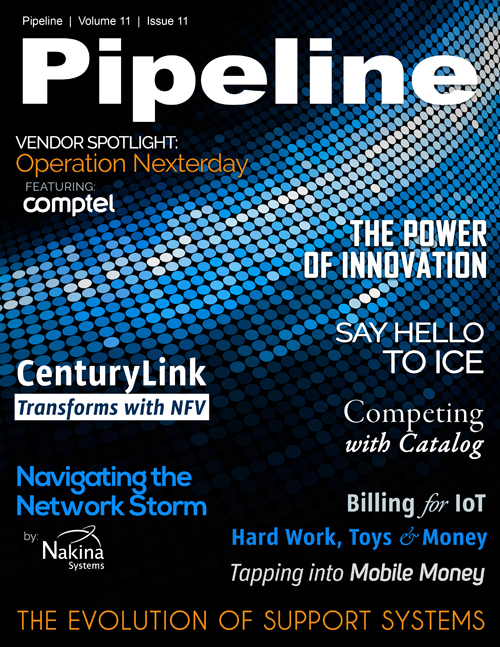Goodbye B/OSS, Hello ICE
ICE is more than cool
Leaving behind the disparate operations and billing management systems of the past and embracing the ICE revolution affords CSPs “an operational efficiency advantage, reduces costs and
streamlines their processes around IT and operations,” says Phil Bull.
In addition, ICE creates new revenue streams and business models by facilitating the exposure of network assets to third parties and developer partners. It’s what Michael Crossey, former CMO of
Aepona, calls network as a service (NaaS). “It’s mobile cloud services enablement,” he says, explaining that CSPs must move their competency beyond communications to include the agile
delivery and management of commerce, content and control. “Core services used to be [built] around voice and network; OSS and BSS were built around a framework to support the old. All of the new
things are more IP based.”
The concept of leveraging and monetizing core assets such as device, network, location, and profile data is central to ICE. And who better to sit at the center of the new digital economy than
service providers, the custodians of the customer relationship? No one else is positioned to ensure quality of service (QoS) for streaming video, for example, or deliver relevant services based
on user profile. On the flip side, when customers experience problems with streaming video or a VoIP call gone bad, they call their service provider for support, not Netflix or Skype. Shifting
from OSS/BSS to ICE allows CSPs to create innovative offerings like dynamic turbo-boost broadband as well as offerings that match the service and support needs of their respective customer bases.
ICE does this by creating a platform that governs and interoperates with traditional operational and business support systems.
The exposure of network assets also empowers innovation, but in order for developers and innovators to do what they do best, they’ll need more than just raw connectivity. “Providers need to
provide access to more than just the network,” says Verizon’s Praveen Atreya, “and open up the expertise to let [innovative] products on-ramp more quickly.”
Redefining CSPs
As the industry moves from B/OSS and advances towards ICE, it may eventually retire another familiar three-letter acronym: CSP.
The convergence of IT and telecom was a hot topic at Mobile World Congress. That’s because the dawn of ICE will require not only a fundamental change in systems but an evolution of the
organizations that use them. This is essential, says Phil Bull, who envisions a “whole kind of change in the organizational structure.” At the same time, the role of IT is changing, according to
Gartner, “from centralized planner to market manager providing governance and brokerage services to users—potentially even an ecosystem to support ‘apptrepreneurs'.”
To describe corporations like AT&T, BT, DT, Sprint, NTT docomo, or Verizon as solely as communications service providers doesn’t come close to capturing the breadth of their respective
businesses, which extend beyond communications to enablement and experience. As the new digital economy unfolds, “CSP” will likely undergo a transformation as well. CSG International has already
being to use "Digital Services Provider," which does have a certain ring to it. But, as for how the future will unfold, it’s still unclear, of course. But the ICE revolution has obviously begun.
Hold on to your smartphones! Or, should I say "ICE devices?"



















